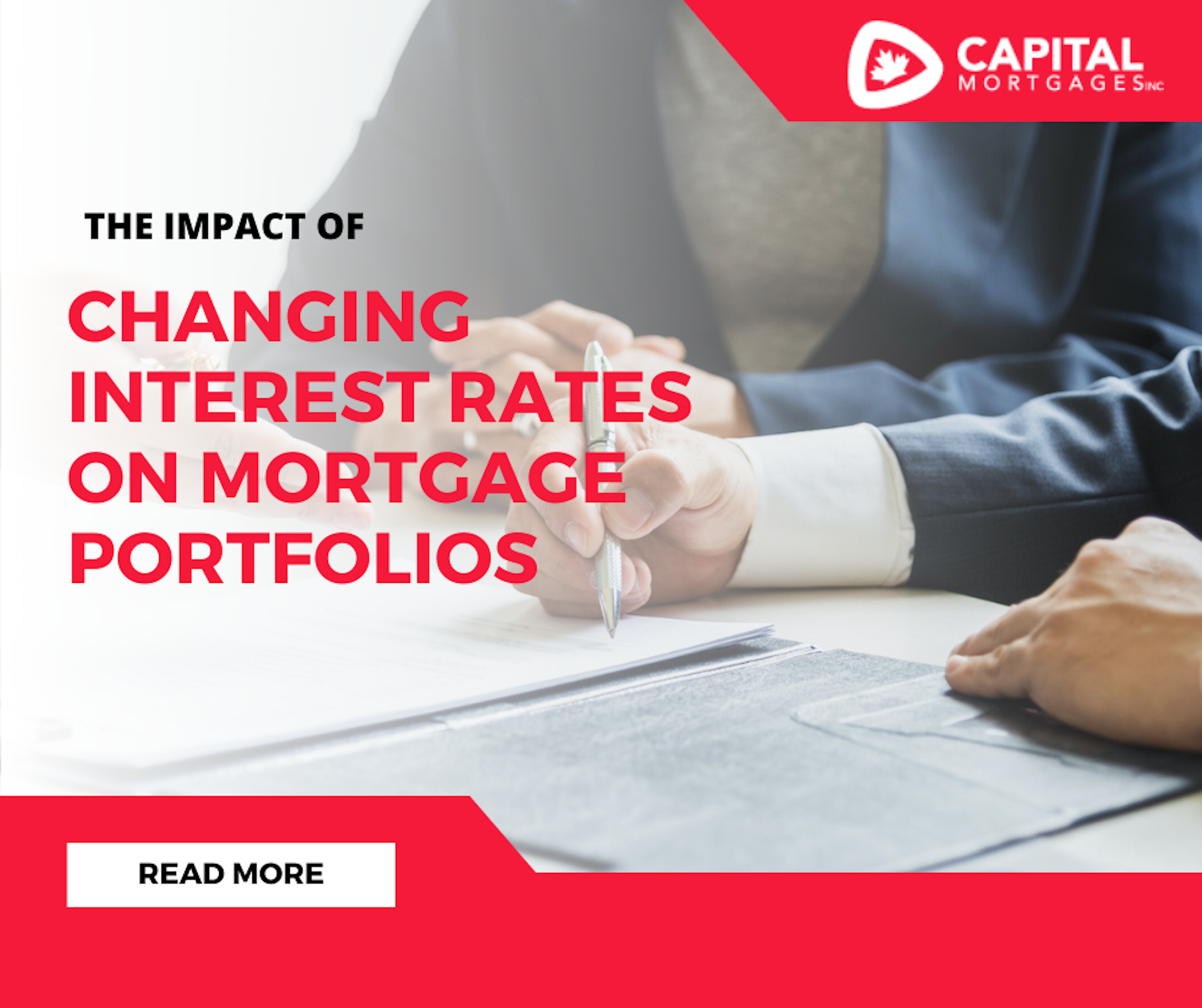Interest rates play a pivotal role in the world of mortgage investments. Whether you’re a homeowner with a mortgage or an investor in mortgage-backed securities (MBS), understanding how fluctuating interest rates affect mortgage portfolios is crucial. In this blog, we’ll analyze the impact of changing interest rates on mortgage portfolios and explore strategies for mitigating the associated risks.
How Changing Interest Rates Affect Mortgage Portfolios
- Mortgage Rates and Borrower Behavior: As interest rates rise, the cost of borrowing increases. This can lead to a decrease in new mortgage originations as potential homebuyers find it less affordable to purchase homes. Conversely, when rates drop, it often sparks a surge in refinancing activity as homeowners seek to take advantage of lower rates. This ebb and flow can impact the composition of a mortgage portfolio.
- Mortgage Prepayments: When interest rates fall, homeowners may choose to refinance their mortgages to secure lower rates. This results in increased prepayment speeds for mortgage-backed securities (MBS) investors, potentially affecting the expected cash flows and returns on MBS holdings.
- Interest Rate Risk: Mortgage portfolios, especially those containing long-term fixed-rate mortgages, are susceptible to interest rate risk. If rates rise, the value of these mortgages may decline, potentially resulting in unrealized losses for investors.
- Yield Curve Changes: The shape of the yield curve, which reflects the relationship between short-term and long-term interest rates, can impact mortgage portfolios. A flattening or inverted yield curve may signal economic uncertainty and impact mortgage credit quality.
Strategies for Mitigating Risk
- Diversification: Diversifying a mortgage portfolio by including a mix of fixed-rate and adjustable-rate mortgages (ARMs) can help mitigate interest rate risk. ARMs often have lower initial interest rates but can adjust with market rates, providing some protection during rate hikes.
- Hedging Strategies: Investors can employ interest rate hedging strategies, such as interest rate swaps or options, to offset potential losses from changing rates. These strategies can be complex and should be used with caution.
- Active Portfolio Management: Regularly assess and adjust the composition of your mortgage portfolio in response to changing interest rate environments. This can involve reallocating assets to align with market conditions and investment goals.
- Focus on Duration: Duration measures a bond’s sensitivity to interest rate changes. Investing in mortgage securities with shorter durations can help reduce exposure to interest rate fluctuations.
- Risk Modeling: Utilize risk modeling and analytics to assess the impact of various interest rate scenarios on your mortgage portfolio. This can help you make informed decisions and identify potential vulnerabilities.
Conclusion
Changing interest rates have a profound impact on mortgage portfolios, affecting borrower behavior, prepayment speeds, interest rate risk, and more. Investors and homeowners alike should be aware of these dynamics and consider strategies to manage and mitigate the associated risks. Whether you’re a homeowner looking to refinance or an investor managing a mortgage portfolio, staying informed and adapting to evolving interest rate conditions is essential for financial success in the world of mortgages.
FAQ
FAQ 1: How do rising interest rates affect my existing fixed-rate mortgage as a homeowner?
Rising interest rates generally do not directly impact the interest rate on your existing fixed-rate mortgage. Your interest rate remains the same for the duration of your loan. However, if you’re considering refinancing to take advantage of lower rates, rising interest rates in the market may reduce the potential savings from refinancing.
FAQ 2: What are the potential benefits of diversifying my mortgage portfolio with a mix of fixed-rate and adjustable-rate mortgages (ARMs)?
Diversifying your mortgage portfolio with a mix of fixed-rate and ARMs can offer several advantages. Fixed-rate mortgages provide stability and predictability, while ARMs often come with lower initial interest rates. By including ARMs, you can potentially reduce interest rate risk and align your portfolio with different market conditions.
FAQ 3: Are there any resources or tools available for modeling and assessing interest rate risk in my mortgage portfolio as an investor?
Yes, there are various resources and tools available to help investors model and assess interest rate risk in their mortgage portfolios. Many financial institutions offer portfolio analytics software and consulting services. Additionally, you can find online calculators and risk assessment tools designed specifically for mortgage-backed securities (MBS) investors to evaluate the impact of changing interest rates on your portfolio.
Contact Us
Contact Capital Mortgages today to learn more about refinancing and how we can help you save money on your mortgage. Our team of experienced mortgage professionals is here to help you navigate the process and to find the mortgage solution that best meets your needs. Whether you are looking to lower your monthly payments, pay off your mortgage faster, or access equity in your home, we can help you explore your options and find the best mortgage solution for your unique situation. So, if you are thinking about refinancing your mortgage in Canada, don’t hesitate to contact us today!
We here at Capital Mortgages in Ottawa look forward to assisting you with all your Ottawa mortgage needs. Contact us today by calling us at: 613-228-3888 or email us direct at: info@capitalmortgages.com
You can use these links to APPLY NOW or CONTACT US.
You can also click here.

